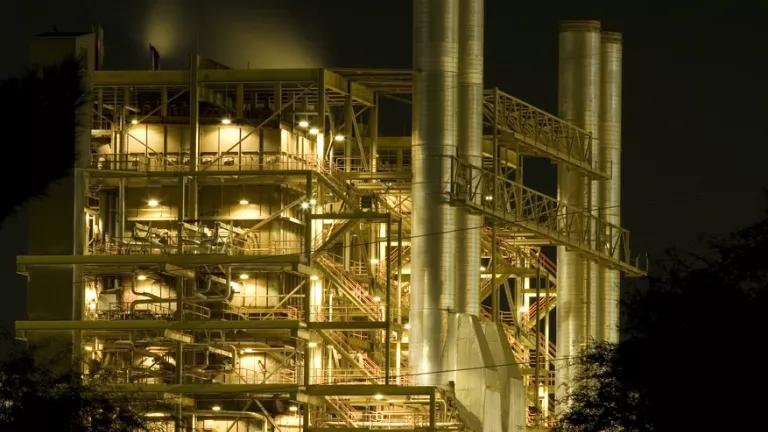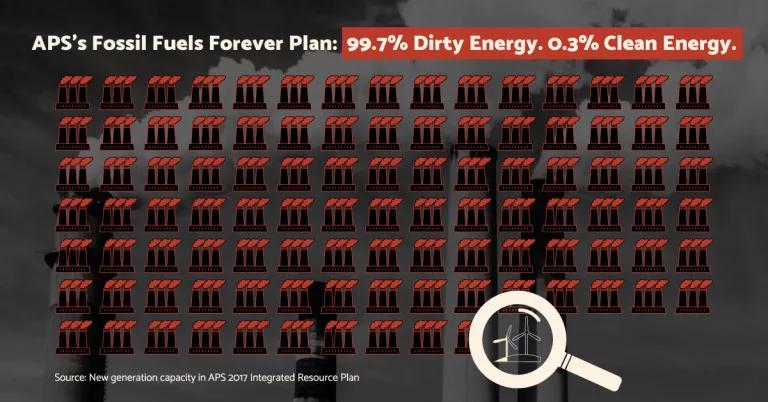
Arizona’s biggest investor-owned electric utility, Arizona Public Service (APS), wants to lock the state into a fossil-fuel-based future, even though there is a clean, reliable energy option that would lower electric bills, reduce health-harming emissions, and create thousands of jobs. APS is vociferously opposing the Clean Energy for a Healthy Arizona ballot measure, which would require utilities to get 50 percent of their electricity from renewable sources like solar and wind by 2030. The likely reason: APS wants to build a bunch of new gas-fired power plants, and they will make less money in a world where the ballot measure passes and their dirty-energy-building-boom no longer makes sense.
We know APS’s plans because they filed a detailed proposal—called an Integrated Resource Plan (IRP)—at the Arizona Corporation Commission last year. In the IRP process, Arizona utilities map out how they will meet customers’ electricity needs over the next 15 years.
APS proposed no new large-scale solar plants in its plan. This is shocking. The plan covers the next fifteen years, Arizona generates just six percent of its electricity from solar, and solar costs so little in Arizona. Instead of building renewables, the utility proposed a massive, multi-billion-dollar build-out of fossil fuel-fired power plants: 2,000 Megawatts of gas combined cycle units (which are designed to operate around-the-clock), and 3,500 Megawatts of gas combustion turbine units (which are designed to meet peak needs). This building boom would increase gas-fired power plant capacity substantially, from 57 percent of total capacity today to 66 percent in 2032, and substantially increase APS’s use of fossil fuels. Use of coal and gas for energy production would increase by 40 percent between 2017 and 2032.

In the plan, gas-fired resources account for 99.7 percent of APS’s new electricity generation, and large-scale solar is absent. The utility does not plan to build any new utility-scale renewable energy power plants (there’s just one, small wind contract extension). APS’s plan also cuts energy efficiency programs in half, and they propose just a small amount of energy storage.
In contrast to APS’s “fossil fuels forever” plan, a 50 percent renewable energy future can meet Arizona’s electricity needs at lower cost and risk than APS’s plan, with big environmental benefits. Modelling of a renewable energy future conducted by the research firm ICF for NRDC finds that 50 percent of the state’s electricity needs can be reliably met by renewable energy by 2030. A 50 percent renewable portfolio standard would lead to the development of 5,320 Megawatts of solar capacity by 2030.
Building those new solar power plants would create jobs, and take away the need for any new gas plants and the out-of-state fuel they require. Our modeling—described here—suggests the renewable energy future would reduce energy infrastructure costs by $4.1 billion between 2020 and 2040 and reduce energy bills, because new renewables are cheaper than unneeded gas plants.
APS spends a lot of time talking about the Palo Verde Nuclear Generating Station. But they are just trying to confuse people. Their real plan is all fossil fuels, all the time. A renewable energy future would be better for Arizona’s economy and environment.

